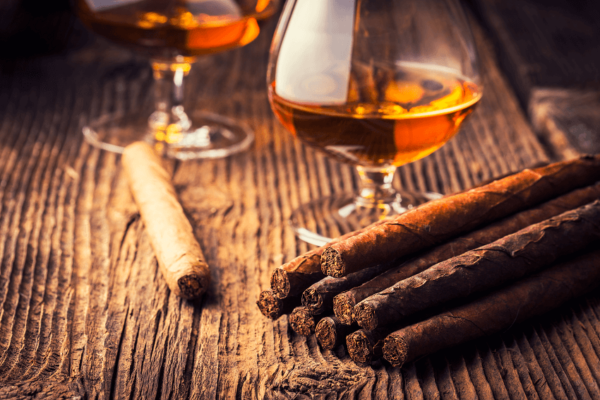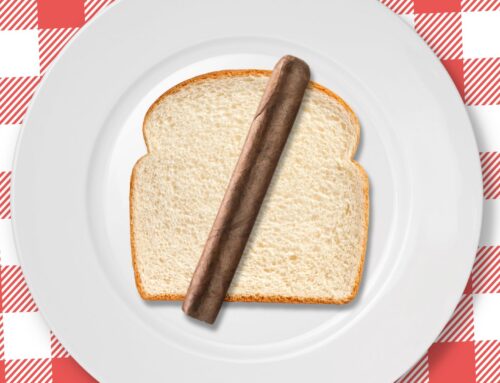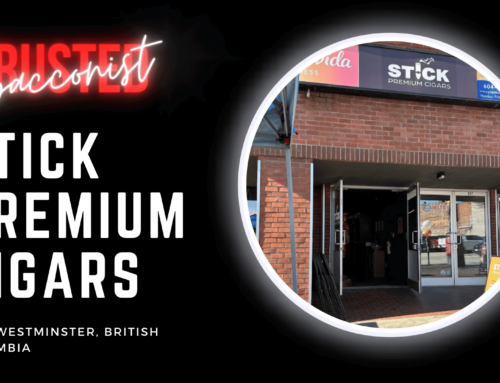Though whisky may seem to be a fan favorite, to many cigar enthusiasts an aged rum is often seen as the best libation to sip while puffing away.

This holds particularly true among cigar enthusiasts who live in the regions where both items often hail from. One possible reason for this may be that they each tell a similar tale of the geographical location in which they came from through a flavor-related concept known as terroir.
It also may have a little bit to do with the surrounding culture.
In this piece, we’ll discuss the concept of terroir and how it may lend itself to the popular flavor combination found in cigars with rum – two of the biggest exports to come out of the Caribbean, Central and South America.
Terroir
One major reason that rum pairs so well with a cigar may have to do with terroir. Originally derived from the Latin word terre, meaning ‘land or earth’, today terroir is borrowed from French and simply means ‘a sense of place’.

Terroir de Vin: The Beaujolais region in France
French populations originally began to use this term to describe any specific region or area used to grow grapes to make a wine. It alludes to the soil, topography and microclimate that are unique to a specific geographical area and the characteristics they impart upon the final consumable product.
Through terroir, the taste profile of a final product essentially ‘tells a tale’ of the land from where its primary crop or raw materials came from.
When it comes to cigars and rum, the main crops to which we are speaking about of course are tobacco and sugar cane respectively – both of which are widely known to originate from the same country or even the same region as one another.
Cigars and Terroir
Regarding cigars, terroir has been found to unquestionably influence the tobacco leaf and the final taste of a cigar. Even though a cigar may contain a blend of tobaccos coming from different regions, it can still tell distinct story about the natural factors of the area in which the tobacco originated.
As cigars are comprised of strictly 100% tobacco that has been cultivated and fermented (just like wine), the final product is very much the flavor embodiment of the land from whence it came.
This concept can be evidenced in observing the use of Cuban seed to grow tobacco in countries other than Cuba. Cuban seed is frequently used to with an intent to create a cigar that is akin to the strength, flavor and aromatics of a Cuban cigar.

Placencia tobacco fields in Estelí
However as a result of the different soil, typography and climate that exists in other countries and their specific regions (such as the Esteli region of Nicaragua for example), the taste always tends to differ significantly from the taste of the tobacco that is traditionally grown in Cuba and its regions.
Because of the differing terroir, Cuban seed – when used to grow tobacco in other parts of the world – tends to imparts a different taste profile than when grown on Cubano soil.
This means that in a cigar you can literally taste the land from where the seed was planted.
Rum And Terroir
When it comes to rum, an influence of terroir on the final taste is still under debate.
Unlike a cigar which is made from strictly fermented tobacco, rum is traditionally made from a byproduct of sugar cane: molasses – and ultimately must endure a myriad of factors throughout the production process to transform and reduce it to a clear liquid.

Cut stalks of sugar cane
The processes of making rum is as follows:
sugar cane is harvested and cut before being crushed to create cane juice. The cane juice is then heated to create sugar crystals. Once the sugar crystals are collected, the thick, sticky residue that remains is molasses.
After the molasses is diluted with water, as with a cigar it must ferment. The major difference here is that yeast is added.
The next step involves distillation via a pot or column still. This is where the previously fermented liquid is heated and turned to alcohol vapors before returning to a liquid and being cooled. After 2-3 consecutive distillation runs, the liquid is collected as a clear spirit prior being stored in either an inert vessel or aged in oak cask.

Pot stills used for rum distillation
After this process, the rum is often blended with other rum from other inert vessels or oak casks. Prior to bottling, some rums are sweetened with additional sugar and may even have some spirit caramel added for coloring (these practices are typically frowned upon by rum aficionados who tend to prefer a “dryer” final product that has simply derived its color from the oak barrel it matured in).
Unlike a cigar (or even wine where the concept originated), the final product appears in a drastically different state than the raw material (sugar cane) which it began as. There is not a clear and noticeable transmission of flavor from the land or region to the final product.
With the exception of rhum agricole or Brazilian Cachaca (rums that are distilled from sugar cane juice, not molasses), terroir is not clearly evidenced in the case of rum.
Though a Cuban cigar maker may enjoy Scotch, it’s even more likely that he or she has more experience in drinking rum, as the island nation is world renown for both offerings.”
So Why Do They Pair So Well Then?
It’s easy to think that ‘what grows together, goes together’ when it comes to cigars and rum. However truth be told, the distillation process involved in making rum practically vaporizes and ‘distils out’ so much of the essence of the original raw product and also the land from where it was grown.
However, it is often believed that it is during the oak maturation period when the local tropical environment can truly have an impact on taste. In many Spanish style rums for example, you can literally taste the salinity that is often found in the beach air.
Though the concept of terroir does not seem to fully apply to rum, it’s quite certain that the master blenders who are responsible for creating a rum often draw heavy inspiration from tobacco and cigars when creating a preferred flavor profile.

A Diplomático Rum cigar made to be paired with the classic Venezuelan rum.
Though a Cuban cigar maker may enjoy Scotch, it’s even more likely that he has more experience in drinking rum, as the island nation is world-renown for both offerings. Thus, he creates a product that he can envision enjoying alongside rum.
Are tobacco notes found in rum? You betcha – tobacco notes abound in an aged rum.
Let’s get even more specific. You’ll frequently hear rum reviewers speak of discovering notes on the nose and palate such as tobacco leaf, cigar ash, cedar spill, sweet tobacco, cigar box, unlit cigars, and so on.
Also, there are also literally countless overlapping complimentary notes that are commonly found in both items, such as:
molasses, baking spices, caramel, cashew, pepper, cocoa, coffee, cinnamon, bread, toffee, vanilla, chocolate, graham cracker, almond, licorice – and the list goes on.

The La Aurora Gran 107 Cigar and the La Aurora 110 Anniversario Rum
Over the years, many cigar makers such as La Aurora, Cohiba, Montecristo and others have released special rums made under the same banner to be specifically to be enjoyed with their cigars.
Conclusion
Sure bourbon makes a great match, and so does that heavily-peated Islay Scotch you’ve been saving.
However for your next pairing, try sipping an aged rum that has made the trip to you from a similar location – or even the very same nation – as your cigar. There is a high probability that they were crafted by hands of those who have lived a life within a culture that celebrates both items.
Though terroir and the taste of the land does not always transfer in the case of spirits, these wonderful creations (cigars and rum) have often been thoughtfully crafted with the intention of being enjoyed together.
Hopefully after reading this, the next time you sip a rum with your cigar you’ll see just how complimentary these fine creations truly are.




![My Father Cigars: The Art, Tradition, and Style of Cuba [Made in Nicaragua]](https://www.hofhcanada.com/wp-content/uploads/2024/05/My-Father-Garcia-Boys-Cover-Art-2-1-500x383.jpg)
